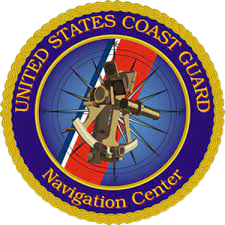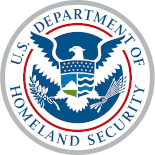A Port Access Route Study (PARS) is usually conducted at the District level. A Notice of Study (NOS) is first published in the Federal Register. Any such notice will identify the study area, provide the reasons for the PARS, and invite public comments and additional information. PARS can take from 1- 3 years to complete.
The following outlines the PARS process:
1. Determine if PARS is required. The District Commander must determine if a PARS is required. This decision may be made based on--
a. A request from a private party. This request should propose a study in a particular area, identify problems due to the lack of vessel routing measures, identify problems with existing vessel routing measures, and provide possible solutions or alternatives to the present situation in the waterway;
b. New information. The District Commander is made aware of the need for new or modified vessel routing measures due to increased Outer Continental Shelf (OCS) activities, port development or improvements, increase or decrease in vessel traffic flow and congestion, or any other factors or information deemed appropriate; and a
c. Review of previous PARS. The District Commander will review any previous PARS for the identified study area and will determine if any conditions or information has significantly changed enough since the last PARS to justify a new study.
2. Identify the study area. The District Commander must identify the applicable geographic study area. The study area must be large enough to consider all activities that may affect or be affected by new or modified existing vessel routing measures.
3. Prepare a draft Notice of PARS. The District Commander will prepare a draft Notice of PARS. The notice will--
a. Delineate the study area and provide a summary of the reasons for the PARS;
b. Invite submission of public comments and additional information. Instructions will be provided on how and where to send comments and information;
c. Present issues and ask specific questions for which we are seeking answers; and
d. Explain any contemplated vessel routing measures and any associated legal effect of those measures.
4. Publication of the Notice of PARS. The District Commander will ensure publication of the notice in the Federal Register.
5. Conducting the Study. There are various methods to conduct a study. The following provides a basic framework for conducting the PARS. District Commanders are encouraged to modify or expand this framework as necessary and to direct any questions concerning the PARS process to Commandant (CG-NAV).
a. Collect and analyze data and other information on—
1) Vessel traffic characteristics and trends (both existing and potential), including traffic volume, size and types of vessels, potential interference with the flow of commercial traffic, presence of any unusual cargoes, and other similar information;
2) Fishing activity;
3) Recreational boating traffic;
4) Commercial ferry traffic;
5) Military activities;
6) Existing and potential OCS resource development activities;
7) Environmental information and factors which may be impacted by potential or amended vessel routing measures;
8) Underway and projected dredging projects;
9) Port development activities;
10) Native American Tribal activities and impacts of potential or amended vessel routing measures;
11) Economic (cost and benefit) effects and impacts; and
12) Information that arises as a result of public comments.
b. Notifications and consultations. The District Commander will notify and consult with all Federal, State, tribal and local government agencies located in or near the PARS study area that may be affected by the results of the PARS. If these actions are unsuccessful at the District level, then the District Commander will notify Commandant (CG-NAV) who will initiate contact and advise the applicable government agencies of the PARS. The District Commander should also notify and consult with representatives of the maritime community, port and harbor authorities/associations, pilot associations, and any other local customer or interest group deemed appropriate.
c. Public meetings. The District Commander should conduct public meetings if deemed necessary or if requested by an interested party. A Notice of Meeting must be published in the Federal Register.
d. Other uses. The District Commander will consider other uses of the marine environment in the PARS area such as:
1) The exploration for or exploitation of oil, gas, or other mineral resources.
2) The construction or operation of deepwater ports, renewable energy installations or other structures on or above the seabed or subsoil of the submerged lands or the OCS of the United States.
3) The establishment or operation of marine or estuarine sanctuaries.
4) Activities involving recreational or commercial fishing or diving.
6. Final PARS Report. The District Commander will publish a final PARS report and forward a copy of the report to Commandant (CG-NAV). The following provides a basic format for the report:
a. Introduction. This provides a general overview of the study.
b. Background. This may include such items as statutory authority, definition of terms, description of study area, and history.
c. Maritime trends and analysis. These may include statistics, projections, and any other pertinent data.
d. New Issues.
e. Summary and conclusion.
f. Recommendations.
g. Enclosures. These could be any supporting documents such as other studies.
h. Appendices. These could include spreadsheets and charts.
The public may be afforded another opportunity to comment on the Final PARS Report. The District Commander should make this determination based on the level of public participation in the study and the whether there was significant disagreement or controversy on possible outcomes of the study. If another public comment period is warranted, the input received could alter the study results.
7. Notice of Study Results. After the PARS is received and reviewed, Commandant (CG-NAV) will work with the District Commander to draft a Notice of Study Results, which will be published in the Federal Register. This completes the PARS process; no further public input will be considered.
8. Implementation. PARS results help program managers establish traffic routing measures, fairways, TSS, limited access areas, recommended routes and regulated navigation areas. They may provide justification for regulatory projects or submissions to the International Maritime Organization (IMO). If the PARS recommends vessel routing measures, Commandant (CG-NAV) will validate the recommendations and initiate the Federal rulemaking process and/or IMO’s ships routing measures process.

